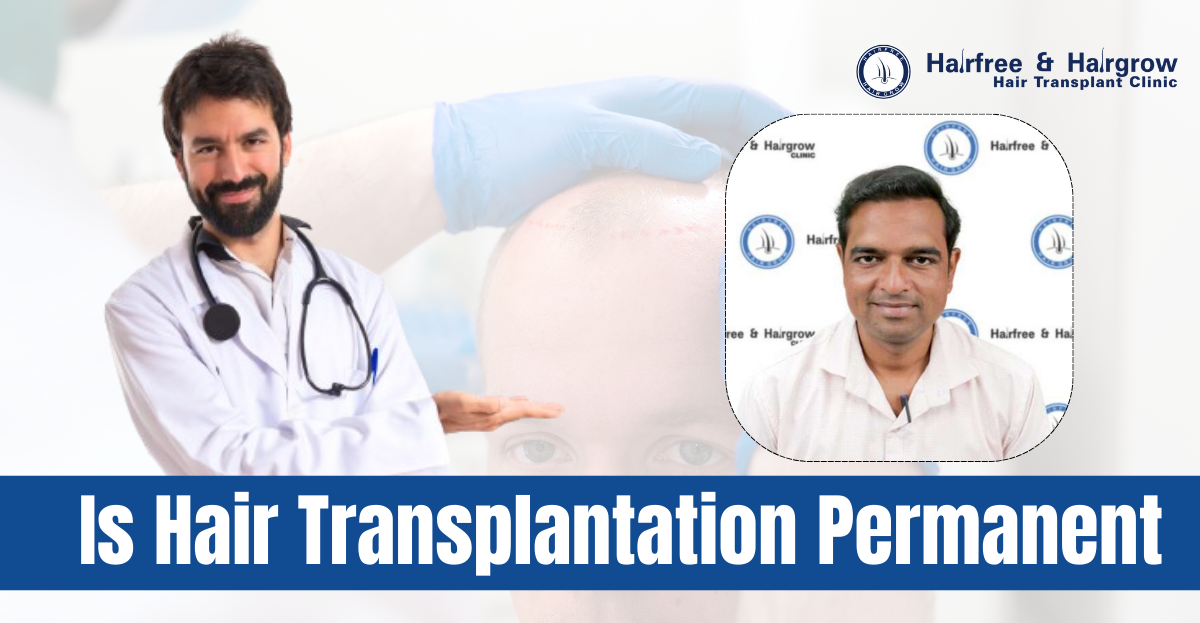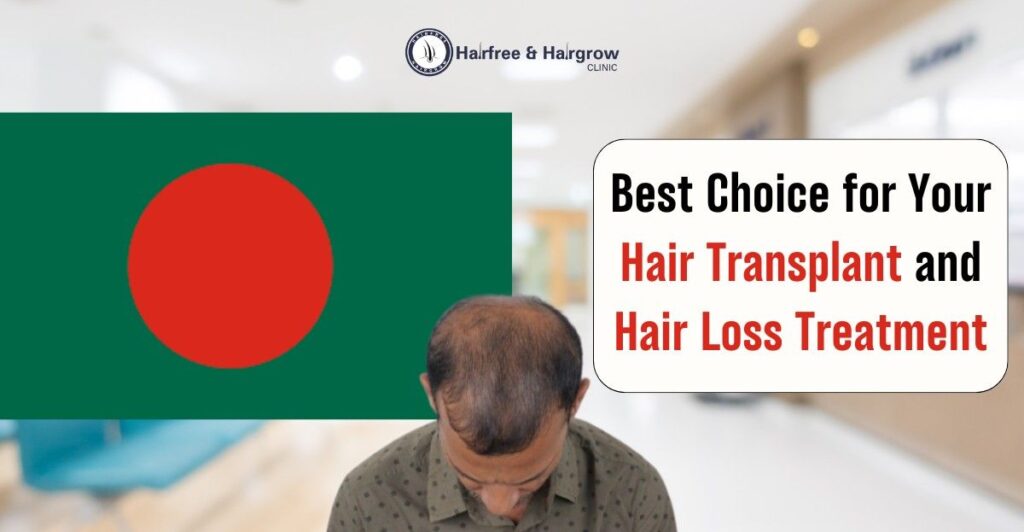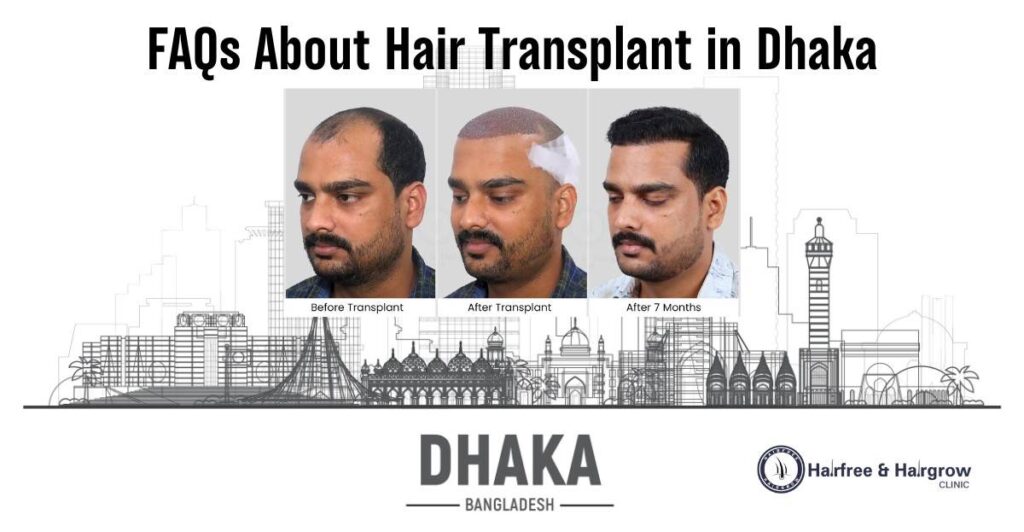One common question people ask when considering a hair transplant is: Is hair transplantation permanent? With hair grafting, the goal is to provide a long-term solution to hair loss. But what happens after the procedure? How long do the transplanted hairs last? This blog will dive into the durability and success rate of hair transplants and discuss how to maintain the results for years to come.
Table of Contents
How Does Hair Transplantation Work?
Hair transplantation involves transferring hair follicles from one part of the body, typically the back or sides of the head, to the areas experiencing thinning or balding. These donor areas are considered “permanent” because they are less affected by hormonal changes that cause hair loss, such as male pattern baldness.
Our Clinic Location: Hair Transplant in Dhaka
The Process of Hair Grafting
The procedure begins with the extraction of healthy hair follicles, which are then implanted into the balding areas. Since the follicles are taken from permanent zones, they are genetically resistant to hair loss. This resistance ensures that the transplanted hair has a much higher chance of staying intact over time.
Why Some Hair Follicles Are Permanent
The hair follicles used in transplants come from areas that are usually unaffected by androgenic alopecia (hormonal hair loss). The back and sides of the head have hair follicles that are not influenced by the hormone dihydrotestosterone (DHT), which is responsible for hair thinning in other parts of the scalp. This is why these follicles remain permanent when grafted to balding areas.

Is Hair Transplantation Permanent?
So, is hair transplantation permanent? The short answer is: Yes, mostly. Once the transplanted hair takes root, it behaves like natural hair and continues to grow for a lifetime. Since the grafted hair follicles are DHT-resistant, the chances of them falling out are minimal.
However, it’s important to understand that hair transplant longevity can vary depending on individual factors, such as age, health, and hair type. While the transplanted hair is permanent, other areas of the scalp may continue to experience hair loss if they were not part of the treatment.
Read Also – How Long Do Hair Transplants Last?
Factors Affecting Permanence
- Age: As you age, natural hair thinning may still occur in untreated areas.
- Health: Poor health or lifestyle choices, such as smoking or poor diet, can weaken the hair, including transplanted follicles.
- Scalp Care: Proper scalp care and post-procedure maintenance help enhance the durability of the transplant.
- Hair Type: Thicker hair tends to show better results in the long term compared to finer hair.
Is It Possible You Could Need Another Transplant?
A good hair transplant should look so natural that even experts can’t tell it’s been done. However, sometimes things don’t go as planned, resulting in an unnatural appearance. This can happen due to outdated techniques or procedural errors.
In the past, methods like large round “plugs,” scalp reductions, or flaps were used. While they worked for a time, as hair loss progressed, these treatments often ended up looking unnatural.
Occasionally, a second transplant may be needed. This can happen if hair loss continues in untreated areas, or if you desire thicker coverage. Most people are satisfied with the results of their initial procedure for many years.
Maintaining the Results of Hair Transplantation
To ensure long-lasting results, you need to take good care of your transplanted hair.
Avoid smoking and alcohol for one week
It takes about three days for the grafts to properly settle, so during this time, you must be extra careful. Smoking can interfere with hair growth, and alcohol should be avoided because it may cause acidity, especially if you’re taking antibiotics or painkillers.
Stay away from dust, heat, and pollution
For at least one week, avoid exposing your scalp to excessive sweat, dust, heat, and pollution. These can lead to itching or infections. Try to stay in a cool, clean environment.
Gentle head wash
Don’t wash your head with high-pressure water in the shower for the first week. There’s a risk of graft loss during this period, so be gentle with your scalp.
Avoid hair products
Refrain from using products like hair oil, hair color, or styling products for at least one month, as they can interfere with the growth of the transplanted hair.
What Happens 10 Years After Hair Transplant?
Most people will continue to enjoy their transplanted hair even 10 years after the procedure. The hair behaves like natural hair, meaning it can be cut, styled, and washed as usual. There is usually no need for special treatments to maintain the grafted hair. However, some natural thinning may occur in untreated areas of the scalp.
Read Also – Hair Transplant Timeline
Conclusion
Is hair grafting permanent? Yes, in most cases, the results are considered permanent, especially when proper care is taken. Hair transplants offer a long-term solution to hair loss, providing people with the confidence and appearance they desire. While other areas of the scalp may still experience thinning over time, the transplanted hair remains durable and resistant to hormonal changes.
FAQ
Hair transplants are designed to last a lifetime since the transplanted follicles are taken from permanent areas of the scalp.
Age, overall health, and proper scalp care can all impact the long-term success of your hair transplant.
Yes, most transplanted hair stays permanent because it comes from follicles that are resistant to hormonal hair loss.
Maintaining a healthy scalp through proper hygiene, diet, and regular scalp care will help ensure the durability of your transplanted hair.
Yes, hair loss can continue in untreated areas. This may require additional procedures if further balding occurs.

Written By
Dr. Nazmin Nipa
Medical Officer & Hair Transplant Surgeon
Dr. Nazmin Sultana Nipa is a distinguished hair transplant doctor in Bangladesh, known for her advanced skills in hair restoration. As a Medical Officer and Hair Transplant Surgeon, Dr. Nipa combines her extensive experience in the field with a focus on transparency and patient-centered care.
Disclaimer
We’ve made all possible efforts to ensure that the information provided here is accurate, up-to-date and complete, however, it should not be treated as a substitute for professional medical advice, diagnosis or treatment. See Detailed Disclaimers Here.



